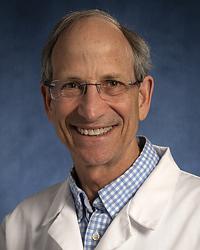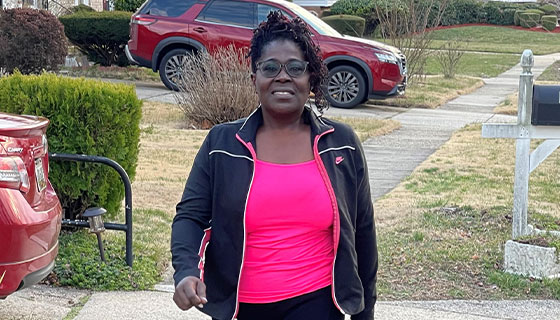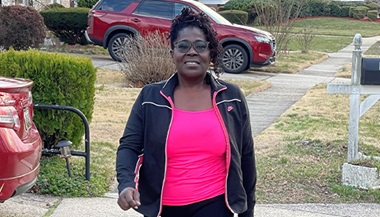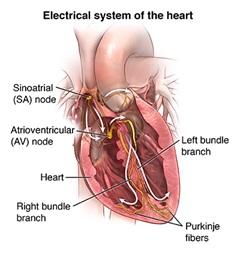Patient Story
Bloodless Mitral Valve Replacement: Wallace’s Story
Patient Story Highlights
- Wallace Johnson is an 81-year-old retired construction worker with severe mitral regurgitation (heart valve disease).
- He visited another hospital, where he was told he needed a heart valve replacement. However, doctors there did not feel comfortable doing surgery on a Jehovah’s Witness patient, since blood transfusion was not an option.
- The Johns Hopkins bloodless medicine team, along with cardiac surgery and cardiac anesthesia, designed a plan for optimal blood conservation during his valve replacement surgery.
- Mr. Johnson was out of the intensive care unit by postoperative day No. 2, and discharged to his home on postoperative day No. 7.
Wallace Johnson is an 81-year-old retired construction worker with severe mitral regurgitation (heart valve disease). Over the past few years, his shortness of breath had increased with physical activity, especially while walking or climbing stairs. He had recently visited another hospital, where he was told he needed a heart valve replacement. However, doctors there did not feel comfortable doing this type of surgery in a Jehovah’s Witness patient, since blood transfusion was not an option.
He and his wife contacted the Johns Hopkins Center for Bloodless Medicine, which connected him to Dr. Dan Choi from cardiac surgery. Dr. Choi agreed to perform the necessary surgery without transfusion if Mr. Johnson’s preoperative anemia was corrected.
Over six visits to the infusion clinic, he received 1 gram of intravenous iron dextran and 6 doses of erythropoietin (EPO), after which his hemoglobin level went from 10.5 to 13.7 g/dL. The bloodless medicine team, along with cardiac surgery and cardiac anesthesia, designed a plan for optimal blood conservation during his valve replacement surgery. Mr. Johnson was out of the intensive care unit by postoperative day No. 2, and discharged to his home on postoperative day No. 7.
From his hospital room, Mr. Johnson pointed out one of the tallest buildings in downtown Baltimore that he helped to build as a masonry worker in the 1970s. He is grateful for the treatment he received by the Johns Hopkins team, which respected his wishes to avoid blood transfusions. For the bloodless medicine team, a successful surgery and a thumbs-up make its day.

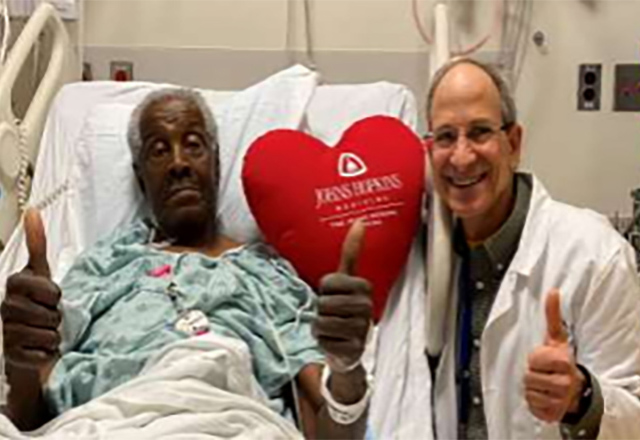 Wallace Johnson with Dr. Steven Frank.
Wallace Johnson with Dr. Steven Frank.